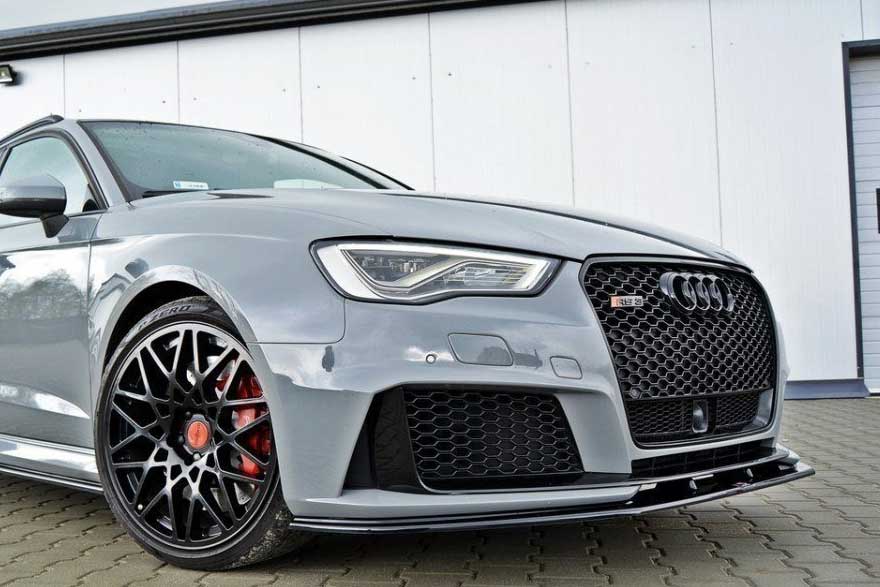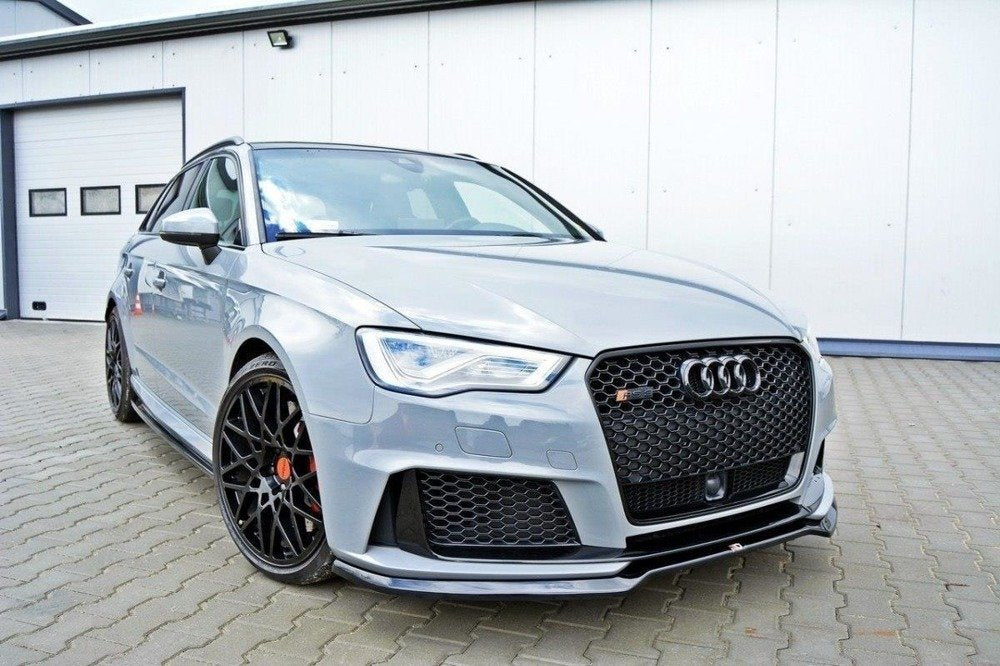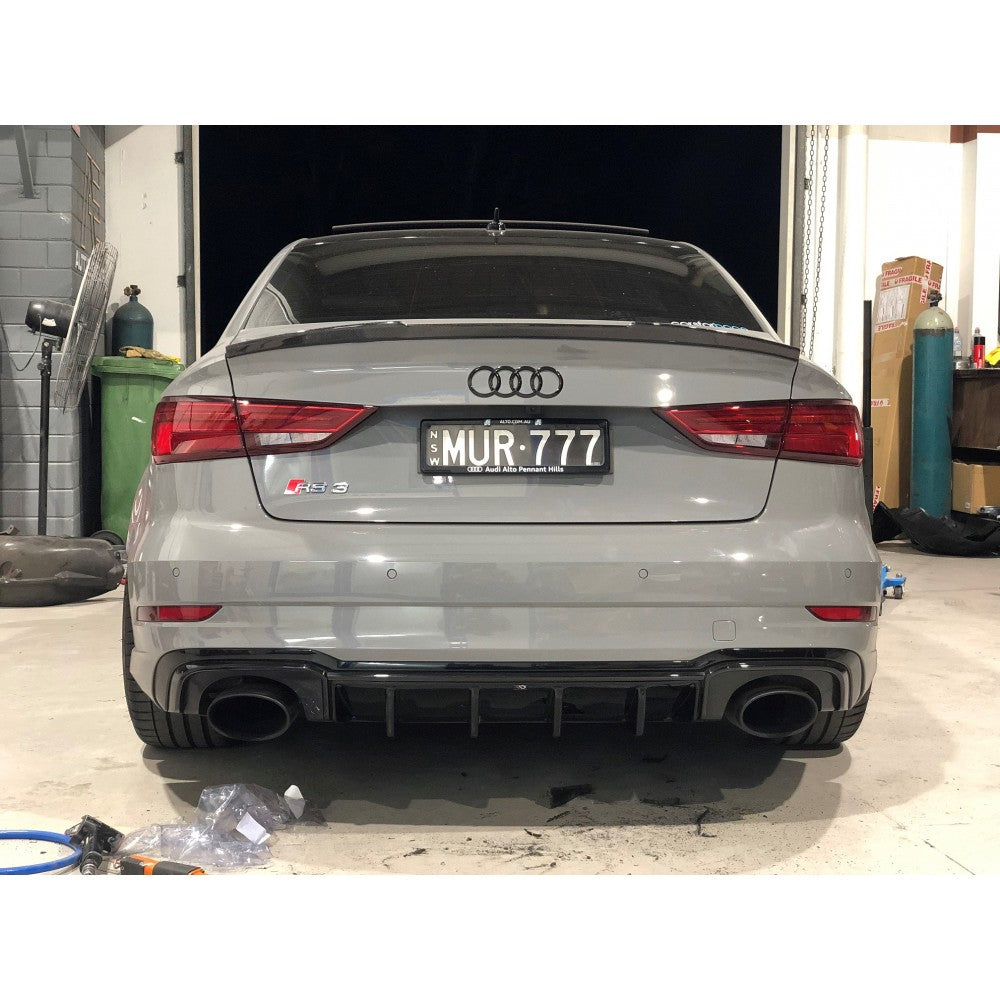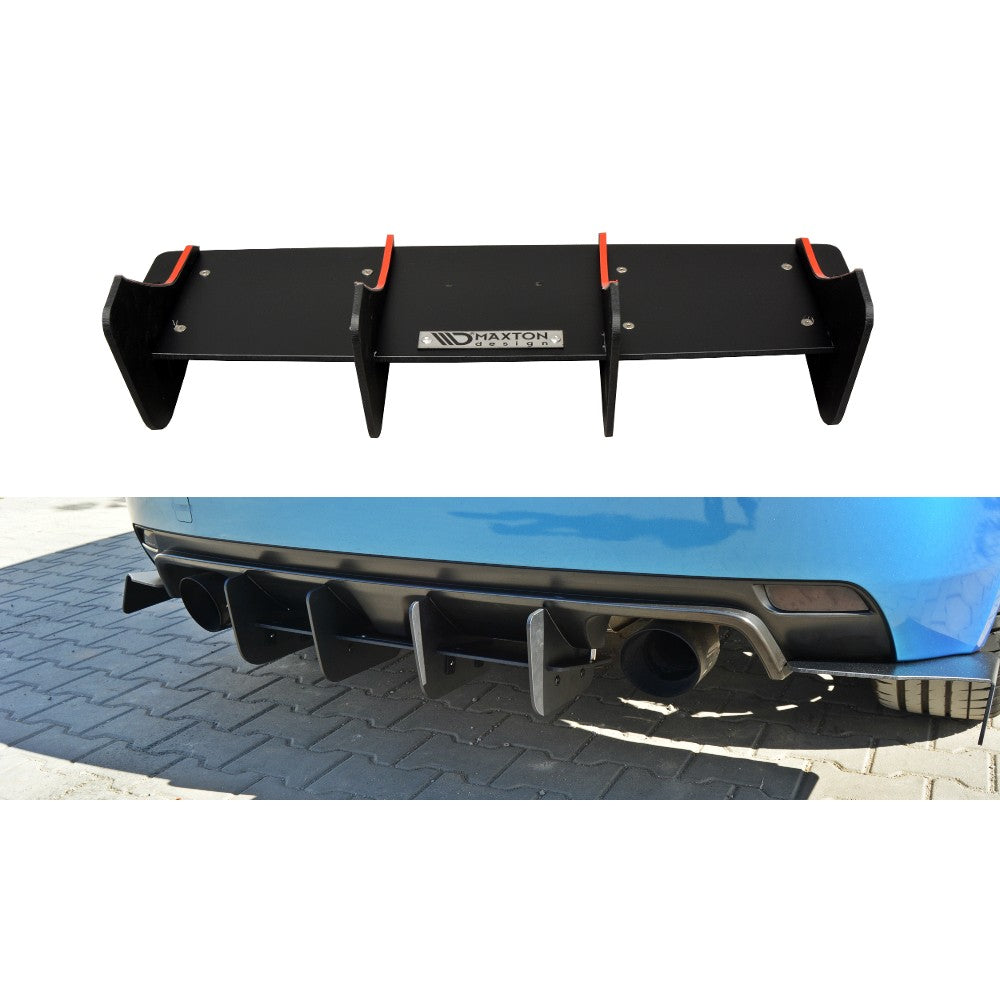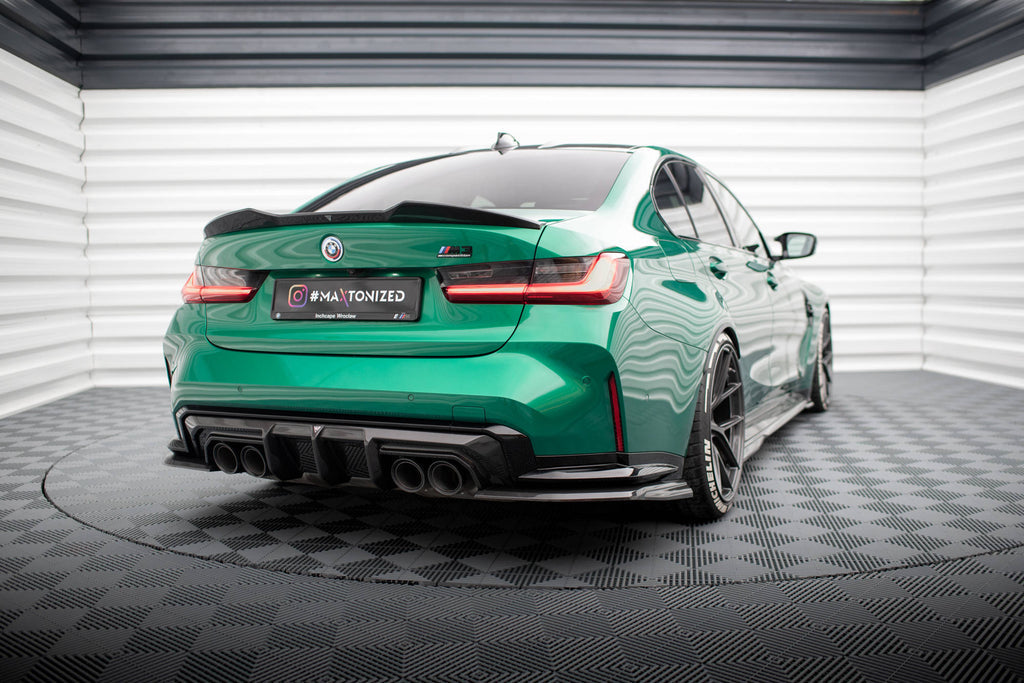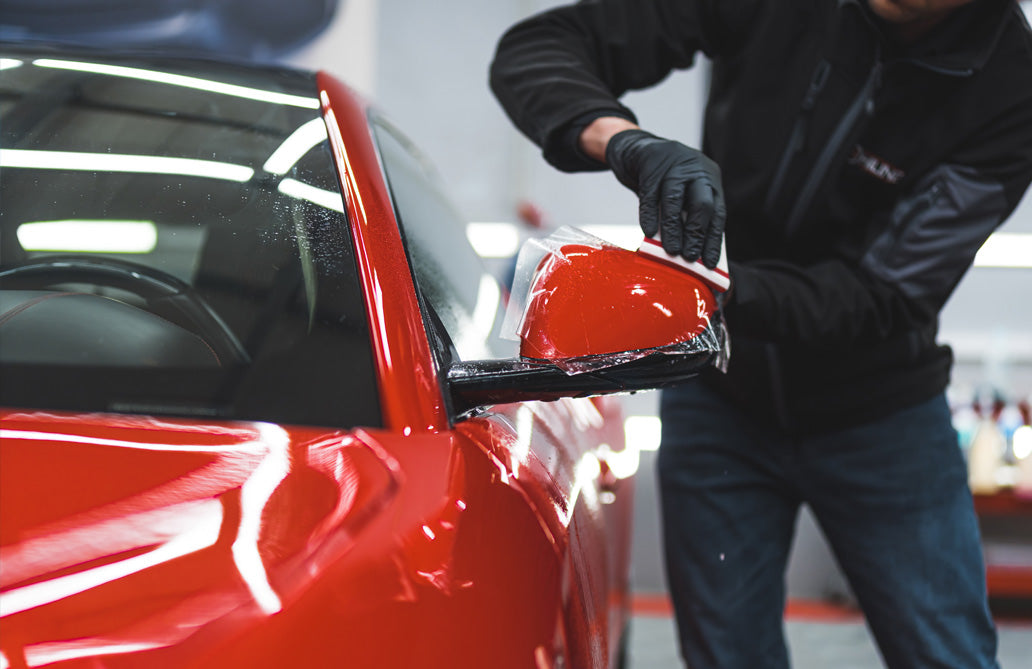Key Takeaways:
- A car splitter is a flat piece of bodywork positioned parallel to the ground, which extends forward from the bottom of a car’s front bumper.
- Car splitters are made of materials such as carbon fiber, fiberglass, ABS plastic, polyurethane, alumalite, or other composites.
- A front splitter can improve a car's speed, but its primary function is to improve handling and stability at high speeds.
- Car splitters work by balancing the high pressure, low-speed airflow ‘overflow’ and low pressure, high-speed airflow ‘underflow.’
If you are thinking about giving the front of your car a sportier look, you have probably thought about installing an aftermarket car splitter. There’s something about a front splitter that screams “race car”. That’s why it is one of the most popular exterior car mods on the market.
Beyond improving a car’s exterior aesthetics, a front splitter also helps to improve a car’s aerodynamics. Let’s take a closer look at car splitters to see what they’re all about, and how they work.
What is a car splitter?
A car splitter is a flat piece of bodywork that extends forward from the bottom of a car’s front bumper. Positioned parallel to the ground, it may be held in place by thin, metallic rods that are anchored in the front bumper.
Its purpose is to create downforce by diverting air flow under the car, which helps to increase grip and stability at high speeds. A front splitter can be made from a variety of materials, such as carbon fiber or fiberglass, and may be adjustable to suit different driving conditions.
Is a front splitter the same as a front spoiler?
A car splitter should not be confused with a front chin spoiler. Chin spoilers are smaller and does not extend outwards as much as a front splitter does. A chin spoiler also has an angled upper surface, and a flat lower surface. This design enables it to ‘spoil’ the air that flows over it, pushing it upwards and over the front of a car.
This is different from a front splitter, which is thin and flat on both sides, and also extends outwards considerably.
Also, the purpose of a front spoiler is to reduce drag by directing air flow over the car, which can help to improve fuel efficiency and top speed. A front spoiler is typically a more complex shape than a front splitter, with curves and contours designed to optimize airflow.
If you’re still confused between the two, keep in mind that a front splitter creates downforce by diverting air flow under the car, while a front spoiler reduces drag by directing air flow over the car.
Do front splitters make your car faster?
Front splitters can help improve a car's speed, but their primary function is to improve handling and stability at high speeds, rather than increasing top speed.
As we’ve already mentioned, front splitters create downforce by diverting air flow under the car, which helps to increase grip and stability. This can make the car feel more planted and stable at high speeds, allowing the driver to take corners faster and with more confidence. The increased grip from the front splitter can also help the car accelerate more quickly out of corners, which can improve lap times.
It's also important to note that front splitters do add some weight and drag to the car, which can have a small negative impact on top speed. Additionally, the benefits of a front splitter may be more noticeable on a track or during high-performance driving, rather than in everyday driving conditions.
What are car splitters made from?
Because of their design, and how they’re positioned, splitters have to be able to endure numerous curb scrapes — so splitter materials need to be both strong and flexible.
Most front splitters are made from carbon fiber, fiberglass, ABS plastic, polyurethane, alumalite, or other composites.
ABS plastic front splitters are affordable, durable, and flexible. The Maxton Design front splitter lip v2 for the Audi RS3 8VA Sportback is a fine example.
Carbon fiber splitters are the strongest, but they are also the most expensive.

How does a car splitter work exactly?
A front splitter helps increase downforce when a car is being driven, causing improved traction and better performance.
Air Resistance
When a car is in motion, it has to push through air resistance. This resistance may not be noticeable at lower speeds; but at higher speeds, you’ll notice that the car’s engine is working harder to propel the car forward.
A lot of air can force its way under the car when it is traveling at high speeds. This can cause the front or rear of the car to lift, resulting in instability and reduced traction. A front splitter helps remedy that.
Overflow and Underflow Balance
The incoming air that hits the front of a car when it is accelerating has its own velocity and pressure. When a car is fitted with a front splitter, that incoming air is ‘split’, so a good portion of it flows over the splitter (let’s call it ‘overflow’); while the rest goes under the splitter and under the car (let’s call it ‘underflow’).
The air that flows over the splitter hits the front bumper and slows down, building up air pressure over the front splitter. The splitter’s large surface area allows for the significant air pressure build-up, which in turn pushes down the car’s front end. This facilitates better traction.
After the ‘overflow’ slows down when it hits the front bumper, it may be forced into vents in the car’s front bumper or over the hood of the car. As it flows over the car, the ‘overflow’ will flow at a low velocity because it had slowed down; but it will also carry the high pressure that it built up in the front of the car.
The ‘underflow’ flows under the car unrestricted. It’s likely to maintain a high velocity and low pressure as it flows under the car. The key to attaining maximum downforce lies in achieving an optimal balance between the high pressure, low speed ‘overflow’, and the low pressure, high speed ‘underflow’.

Splitter Positioning
It’s important to note that if too much ‘underflow’ is allowed to pass under the car, it can result in increased air pressure under the car. This means the splitter needs to be set close to the ground to facilitate the proper suction effect.
However, the splitter shouldn’t be positioned too low, because then too little air will pass under the car. In such situations, less downforce and more drag is created, which is definitely not what you want to achieve.
Ride Height and Aerodynamics
For the best results, you have to set the proper ride height. Installing a suspension system that allows you to adjust the car’s ride height can really help you to get it right. Ideally, you want a height-adjustable coilover suspension or an air suspension.
It is also worth noting that the aerodynamic effects of a front splitter can only be felt when a car is travelling at high speeds of at least 100 km/h. Since you usually don’t drive at such high speeds (unless you are actually a race car driver), you may not get to fully experience the aerodynamic benefits that a good front splitter provides.
So, should you get your car a front splitter?
Now that you know how a car splitter works, you might be considering if one would be a good mod for your car. In our expert opinion, it definitely is. Especially if you’re someone who looks for these improvements in a car and ride experience.
- Improved grip and stability - which helps to keep the car's tires firmly planted on the road especially when driving at high speeds
- Increased cornering speed - a car with a splitter can help you take corners more quickly and with more confidence
- Better balance - a splitter can help to balance the weight distribution of a car, which can improve handling and reduce the risk of understeering or oversteering
- Enhanced aesthetics - aside from the performance benefits, a splitter can also add a sporty, aggressive look to a car
If you’re decided on buying a car splitter, be sure to think about how it’s going to be driven, and what kind would not only look best on your car, but work within your budget.
Browse through AusBody Works vast selection of front splitters. We‘ve been serving Australian car enthusiasts with top-quality, imported ABS Plastic, polyurethane, and carbon fiber front splitters and body kits for years.

